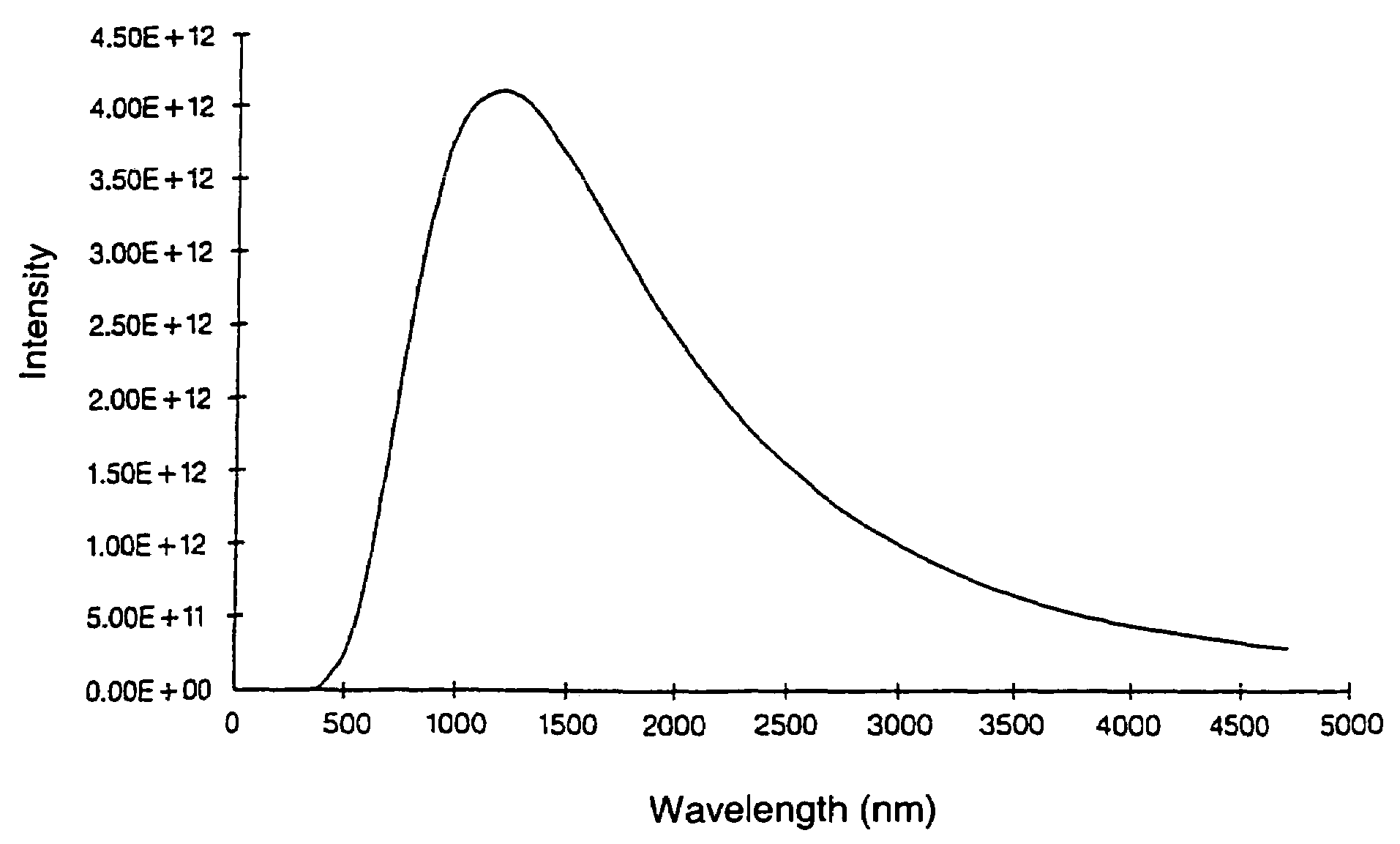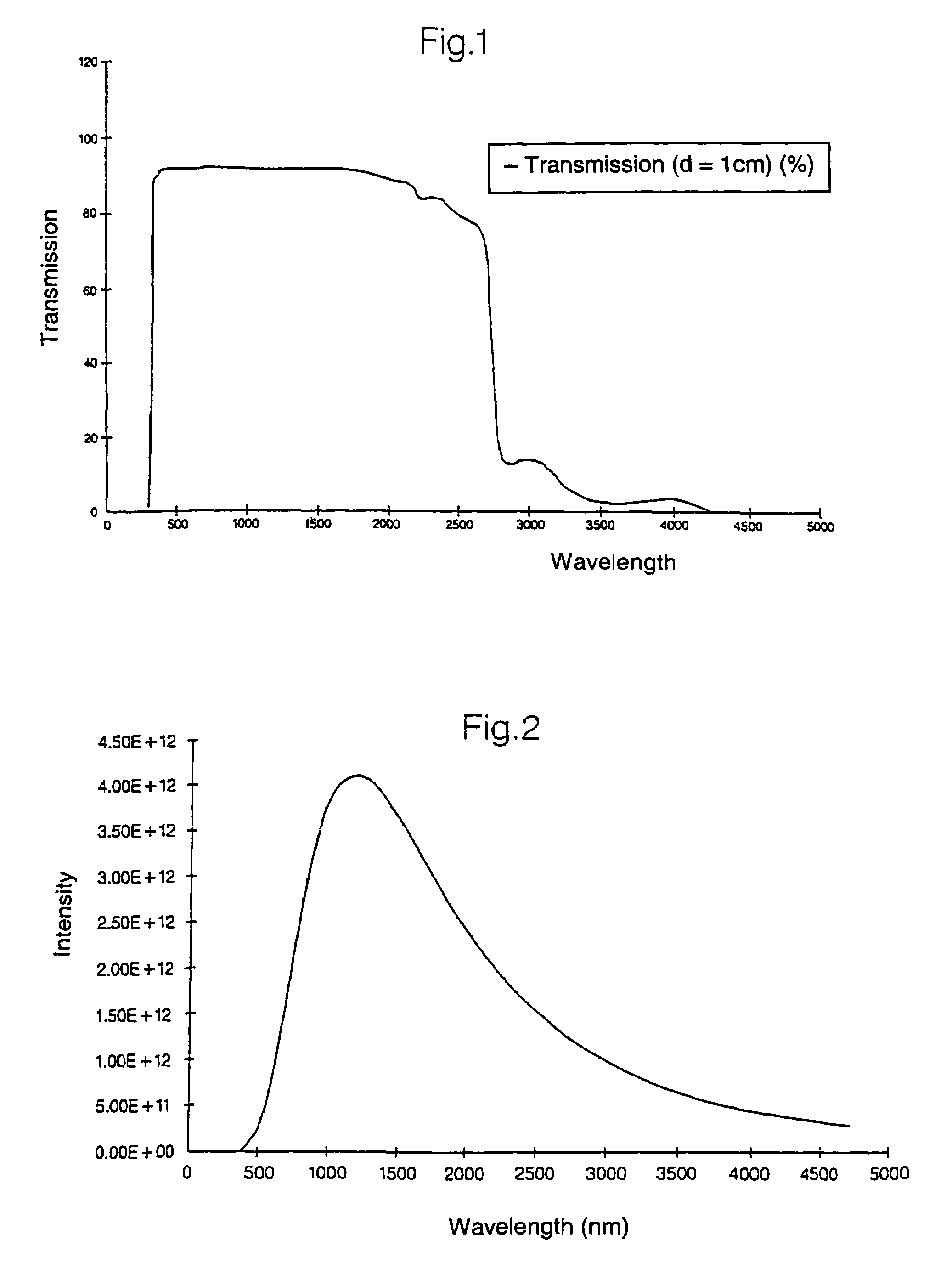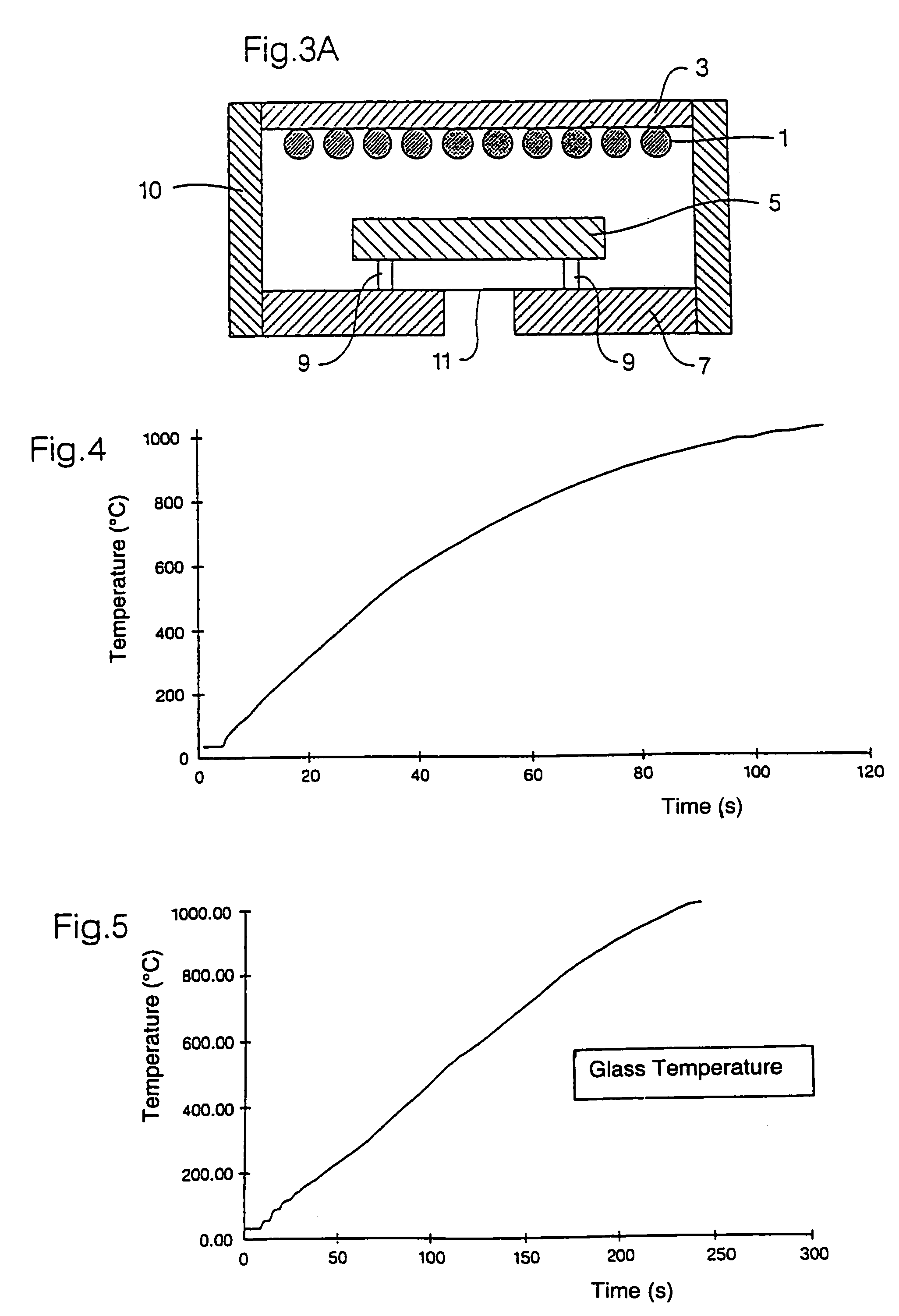Method and device for the homogenous heating of glass and/or glass-ceramic articles using infrared radiation
a technology of glass and ceramics, applied in the direction of glass shaping apparatus, electric discharge heating, furnace types, etc., can solve the problems of inhomogeneity in process and/or product quality, extreme shortening of the useful life of heating elements, and cambering or bursting of glass-ceramic articles, etc., to achieve high
- Summary
- Abstract
- Description
- Claims
- Application Information
AI Technical Summary
Benefits of technology
Problems solved by technology
Method used
Image
Examples
Embodiment Construction
[0048]FIG. 1 shows the transmission curve over the wavelength of glass material used for the comparative tests of the present invention. The glass material has a thickness of 10 mm. There is clearly to be recognized the typical absorption edge at 2.7 μm, over which the glass or glass-ceramic material is opaque, so that the entire impinging radiation is absorbed on the surface or in the surface-near layers.
[0049]FIG. 2 shows the intensity distribution of the preferably used IR radiation source. The IR radiators used are linear halogen IR quartz tube radiators with a nominal output of 2000 W at a voltage of 230 V, which have a color temperature of 2400 K. The IR radiators, corresponding to Wiensch's displacement law, have their radiation maximum at a wavelength of 1210 nm.
[0050]The intensity distribution of the IR radiation sources is yielded correspondingly from the Planck function of a black body with a temperature of 2400 K. It follows then that an appreciable intensity, i.e. an in...
PUM
| Property | Measurement | Unit |
|---|---|---|
| color temperature | aaaaa | aaaaa |
| emissivity | aaaaa | aaaaa |
| wavelength range | aaaaa | aaaaa |
Abstract
Description
Claims
Application Information
 Login to View More
Login to View More - R&D
- Intellectual Property
- Life Sciences
- Materials
- Tech Scout
- Unparalleled Data Quality
- Higher Quality Content
- 60% Fewer Hallucinations
Browse by: Latest US Patents, China's latest patents, Technical Efficacy Thesaurus, Application Domain, Technology Topic, Popular Technical Reports.
© 2025 PatSnap. All rights reserved.Legal|Privacy policy|Modern Slavery Act Transparency Statement|Sitemap|About US| Contact US: help@patsnap.com



